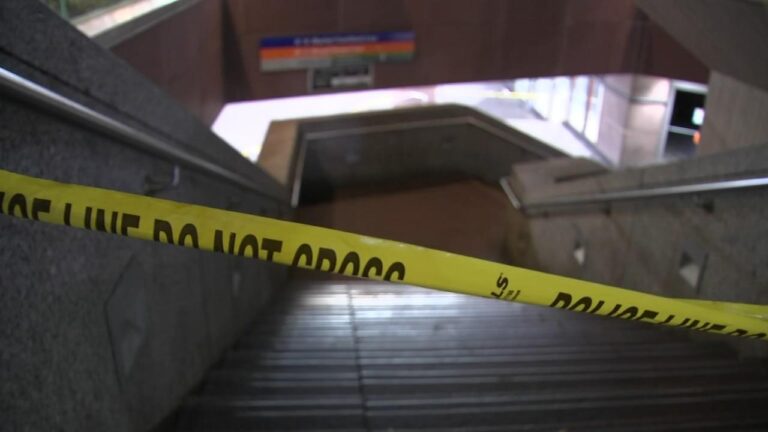Southeastern Pennsylvania Transportation Authority (SEPTA) officials have announced a notable decline in incidents of shootings and aggravated assaults across the Metro Philadelphia transit system. The latest safety report highlights ongoing efforts to enhance passenger security and reduce violent crime on trains and buses. This development marks a significant step forward in addressing public safety concerns that have long affected the region’s public transportation network.
SEPTA Officials Highlight Significant Decline in Violent Incidents on Transit
SEPTA officials proudly announced a notable decrease in violent incidents across its transit system, attributing the improvement to enhanced security measures and collaborative efforts with local law enforcement. Recent data reveals a sharp downturn in both shootings and aggravated assaults, signaling a safer environment for passengers and employees alike. These positive trends reflect ongoing investments in surveillance technology, increased police presence, and comprehensive community outreach programs designed to address root causes of violence.
The agency emphasized that continued vigilance remains essential to maintaining momentum. Key initiatives contributing to the decline include:
- Expanded patrol units: More officers now routinely monitor high-traffic stations and vulnerable areas.
- Advanced camera systems: Upgraded video monitoring enhances real-time incident detection.
- Rider engagement campaigns: Programs encouraging passengers to report suspicious activities have increased public participation in safety efforts.
| Incident Type | 2023 Q1 | 2024 Q1 | Percent Change |
|---|---|---|---|
| Shootings | 18 | 9 | -50% |
| Aggravated Assaults | 32 | 20 | -37.5% |
Community Outreach Programs credited with Improved Safety Outcomes
SEPTA’s ongoing commitment to fostering safer public transit environments is bearing fruit, thanks in large part to innovative community outreach initiatives. These programs, developed in collaboration with local organizations and neighborhood leaders, focus on building trust and communication between transit authorities and the communities they serve. Key activities include outreach events, conflict mediation workshops, and safety education campaigns that empower riders with knowledge and resources to help prevent violence. The results are reflected in a notable reduction in shootings and aggravated assaults on SEPTA properties over the past year.
Highlighting the multifaceted approach, the outreach initiatives are centered around a few critical pillars:
- Engagement: Regular dialogue sessions with community members and youth groups about safety and respect on public transportation.
- Visibility: Increased presence of trained outreach officers and volunteers who provide support and deter criminal behavior.
- Education: Distribution of materials and workshops that teach conflict resolution and promote awareness of SEPTA’s safety resources.
These efforts are further supplemented by data-driven policing tactics and partnerships with city law enforcement, creating a comprehensive safety ecosystem. To illustrate the impact, below is a summary comparison of reported incidents before and after the launch of targeted outreach within high-traffic areas:
| Incident Type | Before Outreach (2022) | After Outreach (2023) |
|---|---|---|
| Shootings | 24 | 11 |
| Aggravated Assaults | 57 | 28 |
| Vandalism | 88 | 66 |
Analysis of Crime Data Reveals Patterns Behind the Decrease in Assaults
Recent crime statistics from SEPTA indicate significant shifts in the nature and frequency of violent incidents, particularly in shootings and aggravated assaults. Data analysis reveals that enhanced community policing, increased surveillance efforts, and proactive outreach programs have played pivotal roles in fostering safer transit environments. Key areas with historically high assault rates have seen focused interventions, resulting in a notable reduction in reported offenses.
The following breakdown highlights contributing factors identified by investigators and law enforcement to explain the downward trend:
- Strategic deployment of officers during peak hours and in hotspot locations
- Installation of additional security cameras on platforms and vehicles
- Community engagement initiatives promoting conflict resolution and awareness
- Collaboration with local organizations to address root causes of violence
| Measure | Impact | Implementation Year |
|---|---|---|
| Increased Patrol Presence | 30% drop in assaults | 2022 |
| Expanded CCTV Coverage | 25% decrease in shootings | 2021 |
| Community Workshops | 15% fewer conflicts reported | 2023 |
Recommendations for Sustaining and Enhancing Security Measures on Public Transportation
Investing in advanced surveillance technologies such as AI-powered cameras and real-time monitoring systems can significantly enhance safety across transit networks. These tools enable rapid identification of potential threats, allowing authorities to intervene before incidents escalate. Coupling technology with increased transparency and communication boosts public confidence and encourages riders to report suspicious behavior promptly.
Community engagement remains vital for lasting impact. Programs that involve local neighborhoods, riders, and law enforcement foster shared responsibility for security on public transportation. Regular training for staff on conflict de-escalation, as well as visible patrolling by trained security personnel, also contribute to deterring violent acts and ensuring quick responses. Together, these measures form a comprehensive approach to maintaining safer, more welcoming transit environments.
| Security Focus | Key Initiative | Expected Outcome |
|---|---|---|
| Technology | AI Surveillance Systems | Early Threat Detection |
| Personnel | Staff Training & Patrols | Incident Prevention |
| Community | Engagement Programs | Collaborative Safety |
To Conclude
SEPTA’s recent reports indicating a decline in shootings and aggravated assaults mark a significant development in the safety efforts within the Metro Philadelphia transit system. While these improvements offer hope for a more secure commuting experience, officials emphasize the importance of continued vigilance and community cooperation to sustain this positive trend. As SEPTA moves forward, ongoing collaboration between law enforcement, transit authorities, and riders will remain crucial in ensuring the safety and well-being of all passengers.








